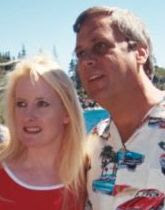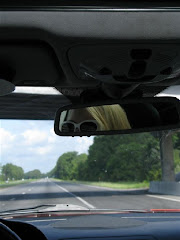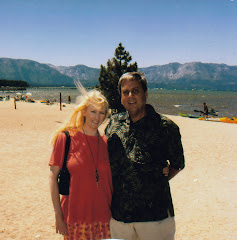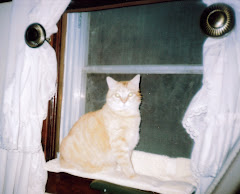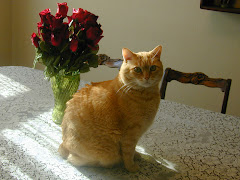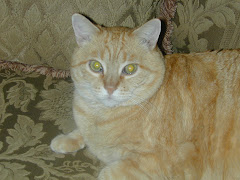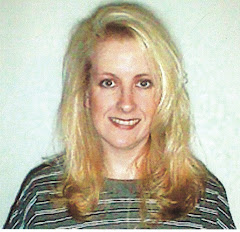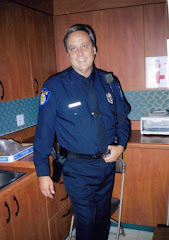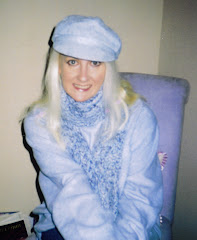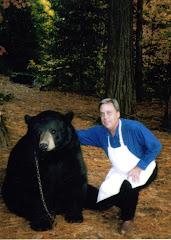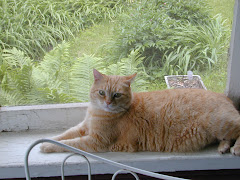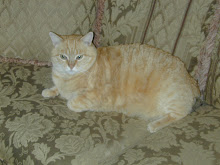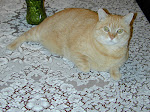
Sailboats with their white and colorful sails provide a beautiful sight on the blue waters of the Iowa Great Lakes. Some sailors are out for the pleasure of sailing - for the enjoyment, while other sailors are out to test their racing skills.
 There are many types of sailboats used for sailing pleasure on the Iowa Great Lakes. The wind is always shifting in small ways that can benefit the sailor smart enough or lucky enough to be on the good side of the wind. Since sailboats can’t sail directly into the wind, each skipper must decide if they will go to the right or left side of the course on their way to the windward mark. If the wind shifts in your favor you will be the first one to the windward mark, given comparable boat speed. Uncle Claire makes participating in sailing is easy and fun. Uncle Claire is the dark haired guy in the center in the above photo. He used to be a member of Okoboji Yacht Club that raced weekly during the spring and summer months on West Lake Okoboji.
There are many types of sailboats used for sailing pleasure on the Iowa Great Lakes. The wind is always shifting in small ways that can benefit the sailor smart enough or lucky enough to be on the good side of the wind. Since sailboats can’t sail directly into the wind, each skipper must decide if they will go to the right or left side of the course on their way to the windward mark. If the wind shifts in your favor you will be the first one to the windward mark, given comparable boat speed. Uncle Claire makes participating in sailing is easy and fun. Uncle Claire is the dark haired guy in the center in the above photo. He used to be a member of Okoboji Yacht Club that raced weekly during the spring and summer months on West Lake Okoboji.
Known as Iowa’s Great lakes, the Okoboji chain is a prairie oasis for Midwestern boaters.
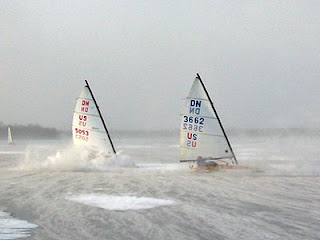
Uncle Claire says some people from Okoboji ice sail in the wintertime with the Yacht Club friends as shown in the photo above.
But, now that the family lake home has been sold there is less sailing these days. Uncle Claire's sailboat is currently in storage on the farm but will hopefully be back in the water again soon. I'm hoping sometime in the summer that can happen. I know Daddy would love to go sailing with Uncle Claire.

In addition to being a great sailer, Uncle Claire is also a well-known musical saw player in this area of Northwest Iowa. Above you will see a photo of Claire, left, and another local musician Henry performing at the Storm Lake Star Spangled Spectacular event held earlier this year. Henry plays the accordion. They generally play Blue Grass. Think Alison Krause and Union Station!
A
musical saw, also called a
singing saw, is the application of a hand saw as a musical instrument. The sound created is an ethereal tone, very similar to the theremin, or a woman's clear voice. The musical saw is classified as an idiophone under the Hornbostel-Sachs system of musical instrument classification.

Above is a Gold plate Mussehl & Westphal musical saw.
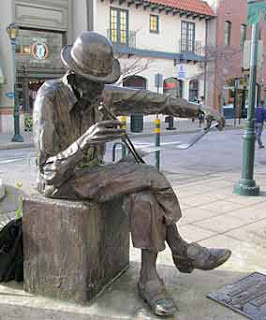
Above is a photo of a bronze statue of musical saw player Tom Scribner in front of Bookshop Santa Cruz.
The saw is generally played seated with the handle squeezed between the legs, and the far end held with one hand. It is generally played with the teeth facing the body, though some more timid players opt to face them away. Some sawyers choose to play standing, either with the handle between the knees and the blade sticking out in front of them, or with the handle under the chin (like a violin).

Uncle Claire and other musicians give a blue grass concert. Claire is the second guy from the right wearing the orange T-shirt.
To make a note, a sawyer first bends the blade into an S-curve. The parts of the blade which are curved are dampened from vibration, and do not sound. At the center of the S-curve a section of the blade remains relatively flat: this "sweet spot" can vibrate across the width of the blade, producing a distinct pitch (the wider the section of blade, the lower the sound). Sound can be created by drawing a bow across the back edge of the saw at the sweet spot, or by striking the sweet spot with a mallet. Harmonics can be heard by playing at varying distances on either side of the sweet spot.

Uncle Claire giving a musical saw concert at church.
The sawyer controls the pitch by adjusting the S-curve, making the sweet spot travel up the blade (toward a thinner width) for a higher pitch, or toward the handle for a lower pitch. Sawyers can add vibrato by shaking one of their legs, or wobbling the hand that holds the tip of the blade. Once a sound is produced, it will sustain for quite a while, and can be carried through several notes of a phrase.

And, sometimes Uncle Claire comes by to visit Mommy, Daddy, and me in our home. Above is a photo of Uncle Claire holding me in the formal living room at our home.
 Daddy is in California right now visiting family there. I miss him when he is away from home, but I know he will be back soon.
Daddy is in California right now visiting family there. I miss him when he is away from home, but I know he will be back soon.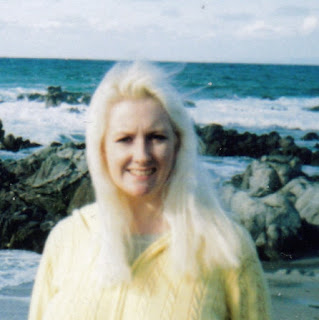 Meanwhile, I am keeping warm in our home with Mommy who spoils me on a daily basis. The photo above is an earlier one taken when she was in Monterey last year with Daddy visiting my step-uncle-in-law Charlie.
Meanwhile, I am keeping warm in our home with Mommy who spoils me on a daily basis. The photo above is an earlier one taken when she was in Monterey last year with Daddy visiting my step-uncle-in-law Charlie.





















































